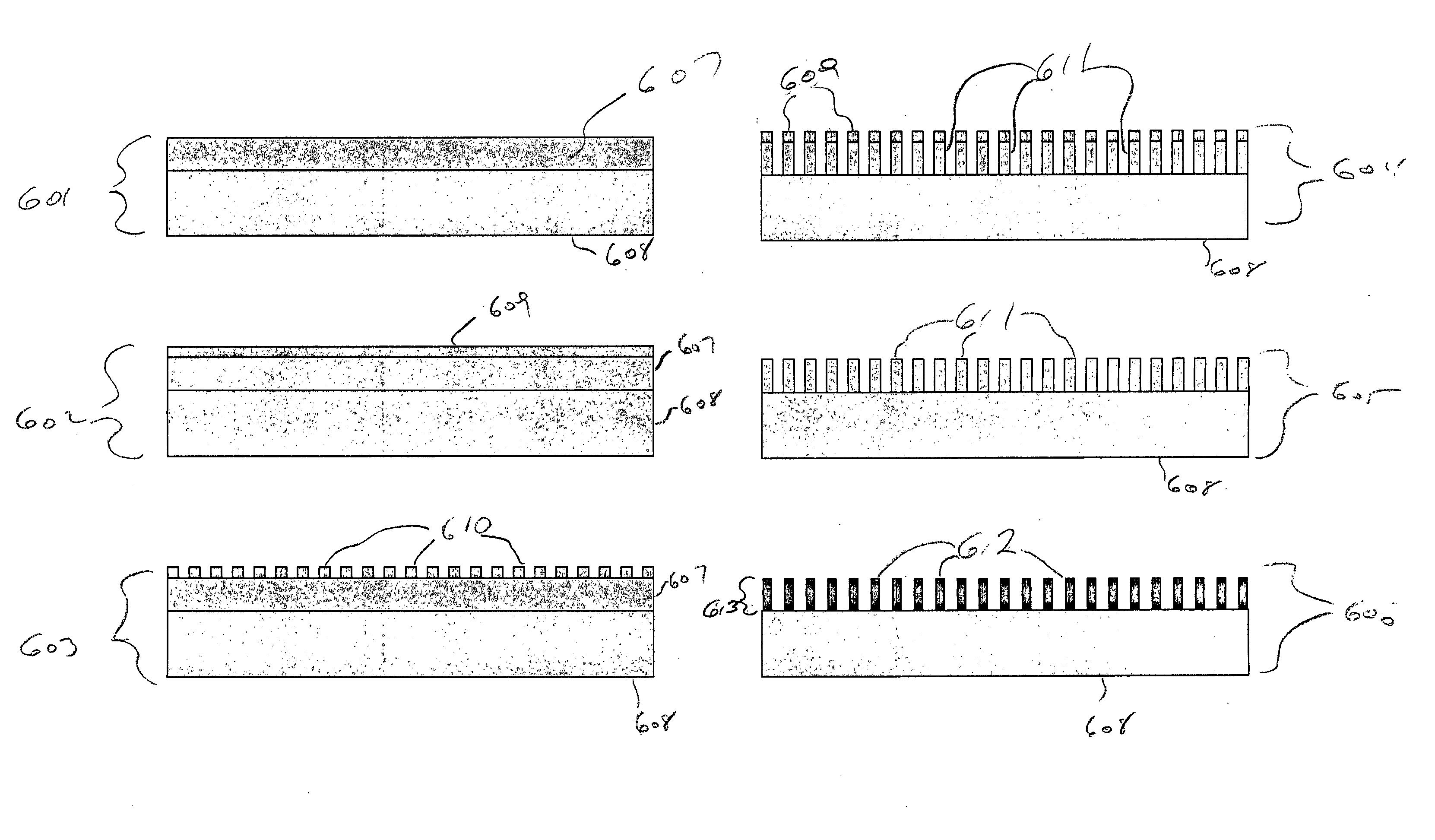Graphitic nanostructured battery
a graphitic nanostructured, micro-batteries technology, applied in the direction of secondary cell servicing/maintenance, cell component details, cell components, etc., can solve the problems of battery depletion, low efficiency of micro-batteries based on intercalating lithium into glassy carbon, etc., to improve overall battery performance and battery life.
- Summary
- Abstract
- Description
- Claims
- Application Information
AI Technical Summary
Benefits of technology
Problems solved by technology
Method used
Image
Examples
Embodiment Construction
[0024] As used herein, unless otherwise specified, a “nanostructure” is a predefined structure having at least one dimension of less than one micrometer. The term “feature pattern” refers to a pattern of nanostructures. The terms “liquid,”“droplet,” and “liquid droplet” are used herein interchangeably. Each of those terms refers to a liquid or a portion of liquid, whether in droplet form or not. The term “graphitic” refers to a three dimensionally ordered array of carbon atoms with planar sheets of hexagonally arrayed atoms stacked in a defined, repeating pattern.
[0025] To better facilitate an understanding of the present invention, a brief discussion on nanostructured surfaces follows. FIG. 2 shows an illustrative nanopost pattern 201 with each nanopost 209 having a diameter of less than 1 micrometer. While FIG. 2 shows nanoposts 209 formed in a somewhat conical shape, other shapes and sizes are also achievable. In fact, cylindrical nanopost arrays have been produced with each nan...
PUM
| Property | Measurement | Unit |
|---|---|---|
| sheet size | aaaaa | aaaaa |
| diameter | aaaaa | aaaaa |
| diameter | aaaaa | aaaaa |
Abstract
Description
Claims
Application Information
 Login to View More
Login to View More - R&D
- Intellectual Property
- Life Sciences
- Materials
- Tech Scout
- Unparalleled Data Quality
- Higher Quality Content
- 60% Fewer Hallucinations
Browse by: Latest US Patents, China's latest patents, Technical Efficacy Thesaurus, Application Domain, Technology Topic, Popular Technical Reports.
© 2025 PatSnap. All rights reserved.Legal|Privacy policy|Modern Slavery Act Transparency Statement|Sitemap|About US| Contact US: help@patsnap.com



